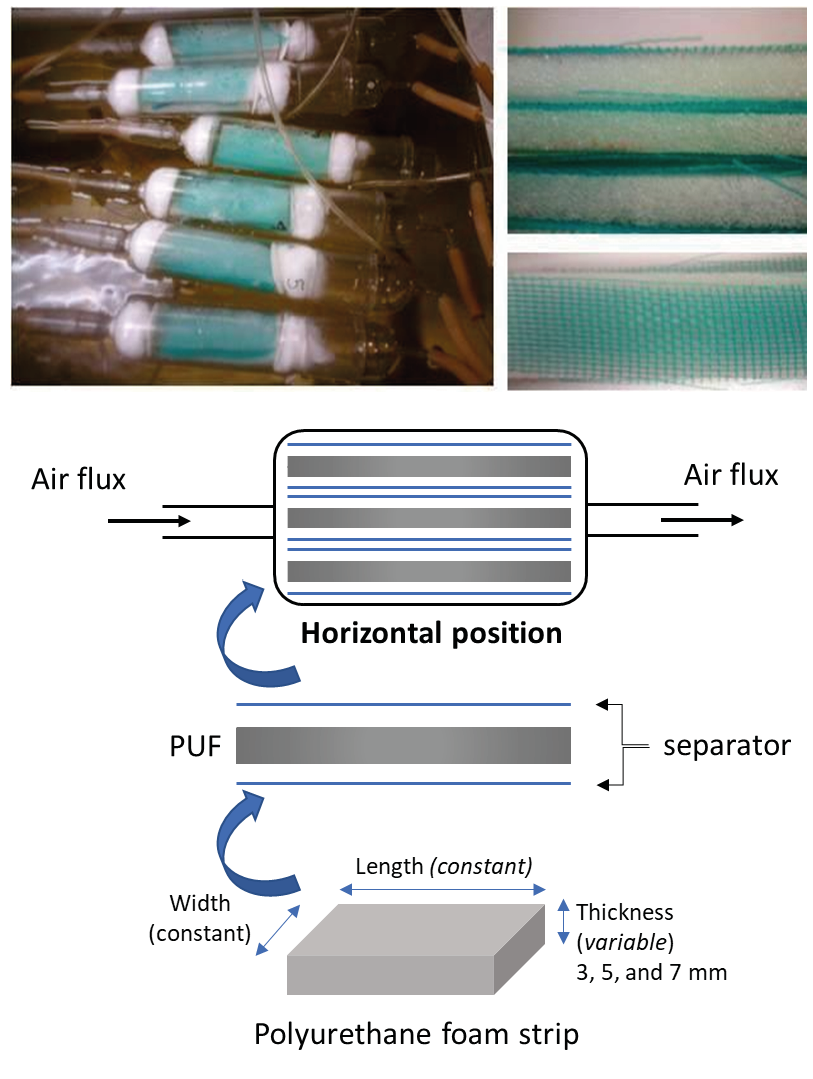 |
|
This work introduces the use of polyurethane foam (PUF) slabs for solid-substrate fermentation. Attention is paid to the distribution and properties of the liquid broth within the slabs in relation to the growth parameters of Pichia pastoris. The experimental setup was made of thin slabs supported horizontally by screens within cylindrical chambers. This way, water loss due to compression or gravity drain was minimal and exposure to tangential air flow was maximal. The highest biomass was $X_{max}$ = 39.5 ± 3.3 gL-1 with So = 150 gL-1 of glucose. Biomass yield, YXS followed the correlation, YXS = 0.525 - 0.0018 S0 (R$^2$ = 0.996), and the growth rate μ = 0.24 h-1/(S0/34.6). The respiratory quotient, RQ, followed a biphasic pattern which is typical of many microbial batch cultures and corresponds to the various metabolic stages through the growth process. The use of horizontal PUF slabs with thickness of 0.7 cm seems to be a practical way to follow the metabolic activities of yeast grown as solid-state fermentation (SSF) under controlled air flow and temperature regimes. since a squared meter of such slabs could produce 83 g of yeast.
Keywords: Polyurethane foam slabs, Solid-Substrate Fermentation, Pichia pastoris, respiratory quotient.
|
|
 |

